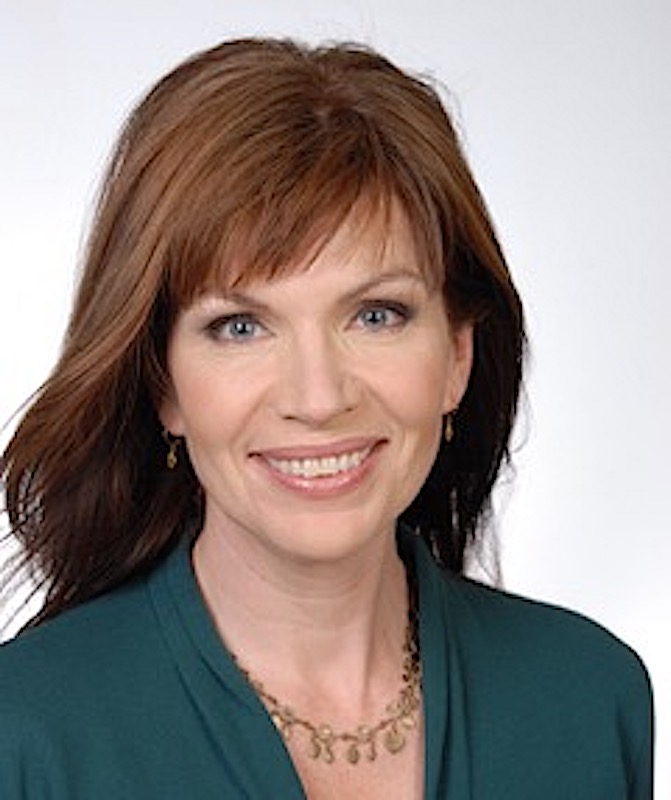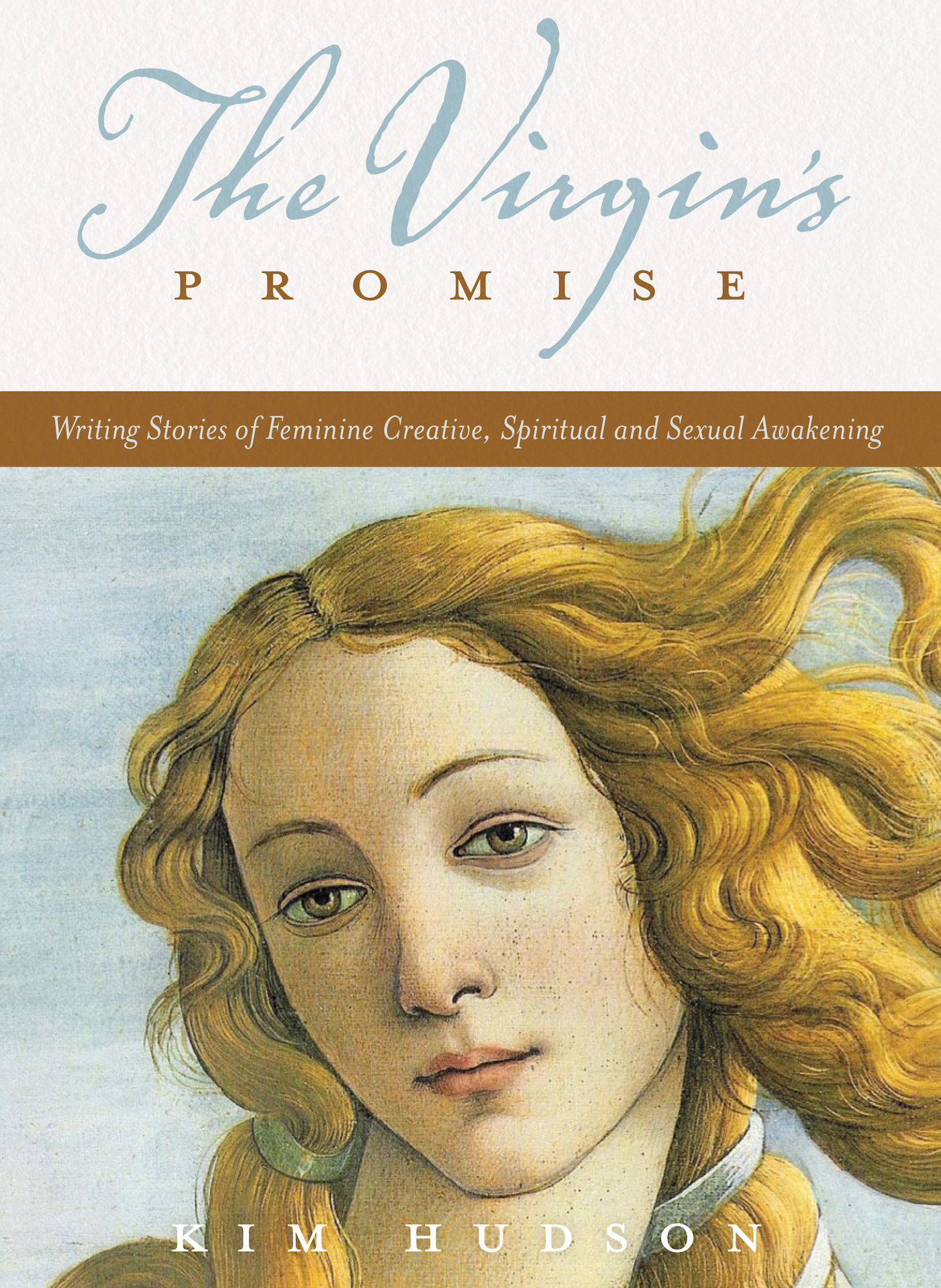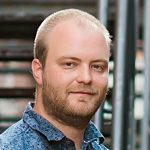“I started out as a field geologist and then I became a land-claim negotiator,” said Kim Hudson. “All of it very masculine, very linear, I would say, and then I had children and thought, ‘what do I authentically want?’ It was the 70s and women were doing ‘everything man can do’ but that changed when I had a child.”
During this discovery phase, Hudson found a book by Julia Cameron called The Artist’s Way. The book, which was meant to “help people with artistic creative recovery” was a major stepping stone in Hudson’s career. “I was diligent. I did everything [in the book] twice — all twelve weeks.”
“What came out of it was a pattern of writing. I thought I would try screenwriting, because how hard could it be?” she joked. “Turns out it’s very hard. But also very rewarding. So I applied to Film School and I got in.” Whenever Hudson feels slightly off, she revisits the Morning Pages.
“There’s something magic when I let that pen just move for a while.” Essentially, Cameron encourages readers to follow a daily practice of writing non-stop for three pages every single morning. This is meant to clear the mind of any clutter so the writer can then simply get to work with improved focus.
“If you follow this pattern every morning when you first wake up, you’re closest to your unconscious. So I used to write looking at her provocative questions. You see where the pen takes you. But the second part is an Artist’s Date where you go do something that appeals to you. So you get in touch then get out and get some inspiration back because you go out with an open heart.”

Kim Hudson
When she first went through this process, the Artist’s Date was the hardest part for her. “I didn’t realize how often I was simply taking care of other people’s needs. Suddenly, I had to do something for myself. Frequently enough, this matched the book I ended up writing.”
The Hero’s Journey
“Those years I spent in geology, that’s basically a hero’s journey,” said Hudson. “You’re facing fear, learning to take on challenges and conquer your own fear, and take action anyway. That was my understanding of what life was supposed to be. I got that from Father who was one of those guys.”
Hudson said her father was a pillar in the community who lettered in multiple sports. “I wanted to be just like him and do great things,” she said, which led to her original career. In the description of herself in the book, she calls herself a “father’s daughter with a Cinderella complex” which also touches on the book’s subject matter.
As for the book itself, Hudson elaborates on its enticing title:
“The Virgin’s Promise demystifies the complexities of archetypes and clearly outlines the steps of a Virgin’s Journey to realize her dream. Audiences need to see more than brave, self-sacrificing Heroes. They need to see Virgins who bring their talents and self-fulfilling joys to life. The Virgin’s Promise describes this journey with beats that feel incredibly familiar but have not been illustrated in any other screenwriting book. It explores the yin and yang of the Virgin and Hero journeys to take up their power as individuals, and includes a practical guide to putting this new theory into action.”
“The Cinderella complex is where you believe that you need to be of service. Constantly helping and working. Then, at some point, people are going to turn around and say, ‘Okay, we’d like to help you now.’ And that never happens. That’s part of the journey. You have to awaken for yourself and know that you are worthy of being the center of your own life.”
Hudson felt a sense of resonance when she learned about Joseph Campbell in Film School. “I could recognize that journey and feel it in so many films. Then, half a beat later, they said, ‘All stories from all time are the Hero’s Journey.’ I thought, that can’t be right. So, in that moment, I had just finished a screenplay but I felt really passionate about these archetypes and how I could figure out another way, another journey.”
She continued, “The Heroine’s Journey is similar to the Hero’s Journey, basically a woman doing a Hero’s Journey, but a Virgin Story is to know your value just for being yourself. It’s an inward journey, guided by love rather than fear. It’s a lovely balance I think all of us need to conquer. Be brave but know what’s authentic.”
Looking Inward
To look inward, Hudson now tells people to examine the thirteen beats of The Virgin’s Promise. In addition, when you watch a film where the character is experiencing The Virgin’s Promise, it activates something within the viewer to find similar self discovery.
“There’s research that believes archetypes are located in the spiritual center of our brain and they’re there because story is meant to pull us forward into the great journeys of life. They cross all cultures as part of the human condition.”
In many stories, it’s often shown as a type of depression or perhaps a taste of a better life where you start to feel differently. “Suddenly, there’s a spark and you don’t know what to do with it. Usually, you meet with somebody and have new sexual urgencies or there’s Billy Elliot, where you throw on a pair of ballet shows and you awaken. You know there’s something and you want more.”
“Usually, we live in a world where we know all of the rules to thrive or survive, so that’s our dependent world, but we’re paying a price if we’re not being authentic when we’re doing that. So it’s that conflict that you’re working with in the story. The protagonist becomes aware of that conflict.”
In Legally Blonde, for example, Reese Witherspoon’s Elle Woods appeared to be doing everything right, and doing it their way, but as she continued to not find approval, she realized there was something more where she could be her authentic self. “I’m not going to make everybody happy, so I might as well make myself happy.”
In the new world the character creates, Hudson said, “It can’t be a world where you can’t make a mistake. It has to be a world where you are surrounded by friends and can explore what brings you joy. That’s the hardest thing to teach. Screenwriting teaches fear and consequences, so it’s a nuance of where you want to be and where you art. But it’s joy that pulls you forward, not cutting off your emotions to take action.”
Heroes and Virgins
Part of Hudson’s book talks about “The Hero Archetypal Journey,” but she said it’s not absolutely necessary for a story to have both the Hero’s Journey and the Virgin’s Promise. Some examples include Billy Elliot, Lady Bird, About a Boy, and Pretty Woman. “All of these are learning to figure out who you are and bring that into the world.”
“Even then, there’s a beat called the Rescue or the Re-order. Often the Hero can’t imagine something that doesn’t exist, but the Virgin is really great at bringing something into the world that has never been in the world before. But when she makes herself visible, she needs a place to belong. The Hero sees what she has to offer, so he would adjust the world for her.” However, there are still movies like Ever After where the protagonist / Virgin “shakes up her own world.”
To come to all of these conclusions, Hudson said she spent time studying mythology and psychology. “I was allowing inspiration to come in, but that counted a lot on watching movies that didn’t seem heroic to me. I wanted to see what was common, how people were coming to conclusions on their own. I had to trust my own instinct, which turned out to be a major part in the Virgin’s Journey.”
She also said she would listen to music and look for virgin themes. Songs like “Let It Go” in Frozen are about getting in touch with yourself. “So I created a soundtrack and I would go running. I felt like, with the music playing at the same time, I couldn’t type fast enough. Connecting to these ideas made a difference in the writing.”
There have also been larger shifts in the overall arc of storytelling. For the first fifty years of Disney, the story basically followed a change to the community and then the resolution was bringing it back to normal, where Pixar films generally find that normal isn’t good enough and one character can change the community for a better world.
“Even the ones starting to win awards — Joker, Parasite, La La Land, The Shape of Water — all of these are about that journey to find yourself and bring it into life. They all hit the beats. To get a full story, you need to hit all thirteen beats.”
The Virgin Archetypal Journey
In Hudson’s book, the beats are listed as:
- Dependent World
- Price of Conformity
- Opportunity to Shine
- Dresses the Part
- Secret World
- No Longer Fits Her World
- Caught Shining
- Gives Up What Kept Her Stuck
- Kingdom in Chaos
- Wanders in the Wilderness
- Chooses Her Light
- Re-Ordering (Rescue), and
- The Kingdom is Brighter
The Hero’s Journey is normally always linear where the Virgin’s Story can be out of order. “I think archetypes are like an energy that moves into your protagonist. Different energies can move into the same character. They can be heroic and then move into the Victim-to-Virgin role. The writer has to know what the heart of the dialogue is at the moment and then they can have these energies move through.”
In Parasite, Hudson said there are multiple Virgin characters trying to figure out how they can be worthy in life. “The hierarchy is oppressing them and they’re trying to get a better grip on being themselves in this world. In Joker, he’s trying to be himself and that’s what he says on the talk show. In Frozen, with the two sisters, there’s the Hero and the Virgin.”
In terms of putting this into action, the author said, “You can’t write a story about someone’s authentic journey unless you write something you have really strong feelings and relate to. I suggest that people write out moments and dialogue and get a sense of what you want to talk about. Then introduce yourself to the Virgin Story and see if you happened to hit on some of the pieces.”
The next step is to see where you are stuck and refer back to the 13 beats to see if any of those beats “energize you to write again.” She said, “It’s a useful tool, not a formula. It’s completely nonlinear. You can start with any beat and make that the opening of your money, even in a straight timeline. This is even true for the last beat, The Kingdom is Brighter, like in the movie The Wife. She had to grow into this new world. So be brave, but know what’s authentic.”
This interview has been condensed. Listen to the full audio version here.

